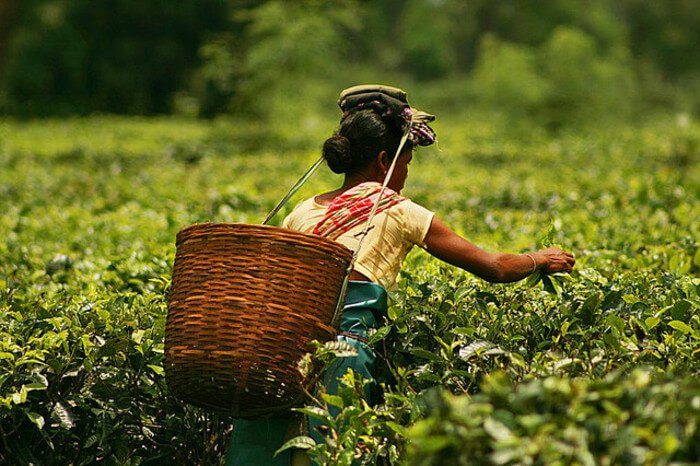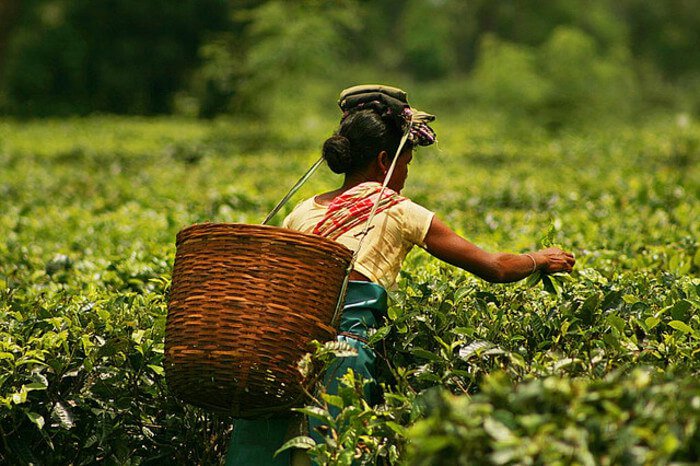India, one of the top tea producers in the world, is experimenting with tea tourism in view of the growing interest shown by tourists to visit tea plantations and tea factories. Ambling through a sprawling tea plantation with greenery all around in the early hours of the day watching a group of local women plucking two leaves and a bud at a fast pace with their nimble hands and collecting them into baskets slung on their shoulders is a winning sight for tourists. India now leads to give tea-buffs and tourists a closer understanding of tea by organizing tea tourism at places like Assam, Darjeeling (West Bengal), Nilgiris belt in Tamil Nadu, and a few pockets in Kerala and Karnataka.
Tea tourism is defined as tourism that is motivated by an interest in the history, culture, traditions and consumption of tea. Estate bungalows amidst sweeping acres of manicured tea plantations have now been converted into tourist accommodations. Not just staying in the midst of tea gardens, tea tourists are taken to a tea factory, where they get to experience how the fresh green leaves are brought into the tea factory for withering to the rolling, drying and shifting stages, grading and packaging and followed by a tea-tasting session where they could sip some of the finest tea that is grown in that area.

Assam in the lead for tea tourism
The first name that crops up in mind for tea tourism is Assam, the largest tea producing region in India. The Assam Tea Tourism Festival held at Jorhat every year is a big hit with tourists. Staying in a rustic colonial-era planter’s bungalow has its own charm. Home to more than 800 tea estates in the state, where amidst luxury and serenity one can drift back in time to days of that elegant colonial aristocracy. The B & A Limited operates through seven quality Tea Estates in the India’s largest tea growing region of Assam. The Guwahati Tea Action Centre, one of the busiest tea trading facilities in the world, is a place not to be missed. Others include Corramore Tea Estate, Teloijan Tea Estate and Khongea Tea Estate besides a host of others.
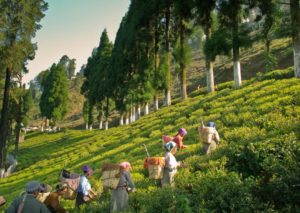
Another major development which is currently in progress is the tourist-friendly makeover of world’s oldest and biggest tea research center at Tocklai (Assam), with edifices that each have a story to tell. A.K. Barooah, director of the Tea Research Association, said recently that the Tocklai Guest House, a heritage building, was home to British tea planters A tea museum will be built with suitable dioramas, models and displays. He said Tocklai can tie-up with other tea tourism enterprises like Kaziranga Golf Resort (Bura Sahib bungalow), Banyan Grove and Thengal Manor bungalow in Jorhat district, the Mancotta chang bungalow and Chowkidingee chang bungalow situated in the heart of Dibrugarh town.”
West Bengal is also fast catching up with Assam in promoting tea tourism. Its Chief Minister Mamata Banerjee last month mentioned that her government will consider tea tourism to benefit tea plantations in the state.
She said, “We have allocated more than Rs. 1,000 crore for the welfare of tea garden workers since 2011. Tea tourism is also under our consideration.”
GOT NEWS? click here
Google News, Bing News, Yahoo News, 200+ publications
The WB state government permits one acre of tea estates to be used for tourism purposes. Currently there are 87 operational tea gardens in Darjeeling district covering an aggregated area of about 19,000 hectares under tea plantation. Darjeeling surrounded by tea orchards that produce the famous light-colored and aromatic Darjeeling Tea has the right ingredients for tea tourism. Makaibari Tea Estate and Homestay in Kurseong, 37 kms from Darjeeling, is one of the top tea producing gardens in the world. In the vicinity of Darjeeling is the Happy valley Tea Estate, one of the highest tea gardens in the world. Raj-era estates located in some of the most scenic destinations in India — the rolling Himalayan foothills of Darjeeling and Dooars beckon tourists. Some famous estates include Glenburn Tea Estate, Sourenee Tea Estate, Singtom Tea Estate and Resort, Ambootia Tea Garden, Barnesbeg Tea Estate and Castleton Tea Estate among others. Goodricke Group Ltd. is offering tourism opportunities in one of its tea estates in Darjeeling where it has five gardens.
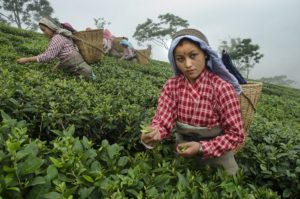
South India also catching up fast
Besides the Northeast belt, in south it is Tamil Nadu which is home to some of the largest tea-growing belts in the country. Nilgiris in Tamil Nadu is the largest tea producing district in South India, and its tea is renowned for its aroma and flavor. With Tamil Nadu producing 65% of tea in South India spanning an area of 65,000 hectares, the Nilgiris area offers great scope for tea tourism. Valparai, a quaint hill station located about 100 km from Coimbatore, is teeming with tea plantations. Billimalai Tea Estate at Glendale, about 10 kilometers from Coonoor, is a perfect place to experience how tea is processed.
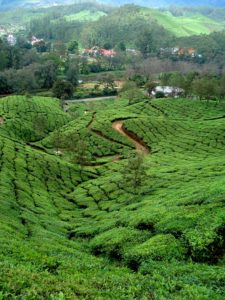
Munnar in Kerala is rustic belle of hill stations where acres and acres of tea plantations feast one’s eyes. A visit to country’s first Tea Museum at Nallathanni Estate is highly recommended at it narrates the history of tea production in the region. The Kundala Tea Plantation in Munnar offers tourists the tea making process in great detail. Tea Sanctuary here is home to refurbished vintage colonial style bungalows amidst misty tea plantations. Considered the highest altitude tea plantation in the world, Kolukkumalai, near Munnar, is known for preserving the British heritage in tea-making at the factory here. Wayanad in Kalpatta district produces substantial amount of tea whose lush green tea gardens are a feast for the sore eyes. The Wayanad Tea County in the midst of the picturesque 395 acre estate, many vantage viewpoints, and trekking routes is a better option.
In Karnataka, Coorg, and the Baba Budan Hills in Chickmagalur are tea-producing regions, but tea tourism is yet to catch here.

